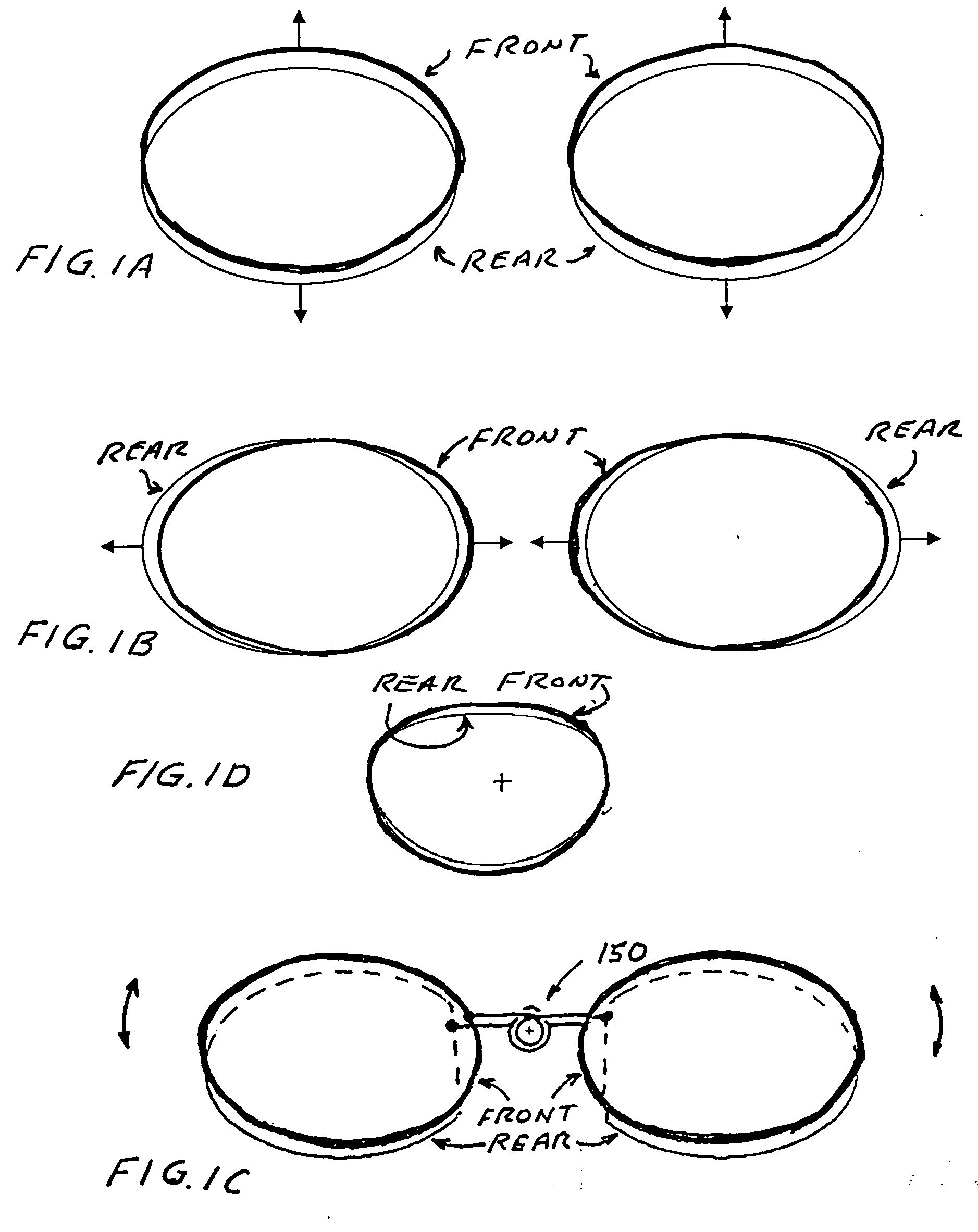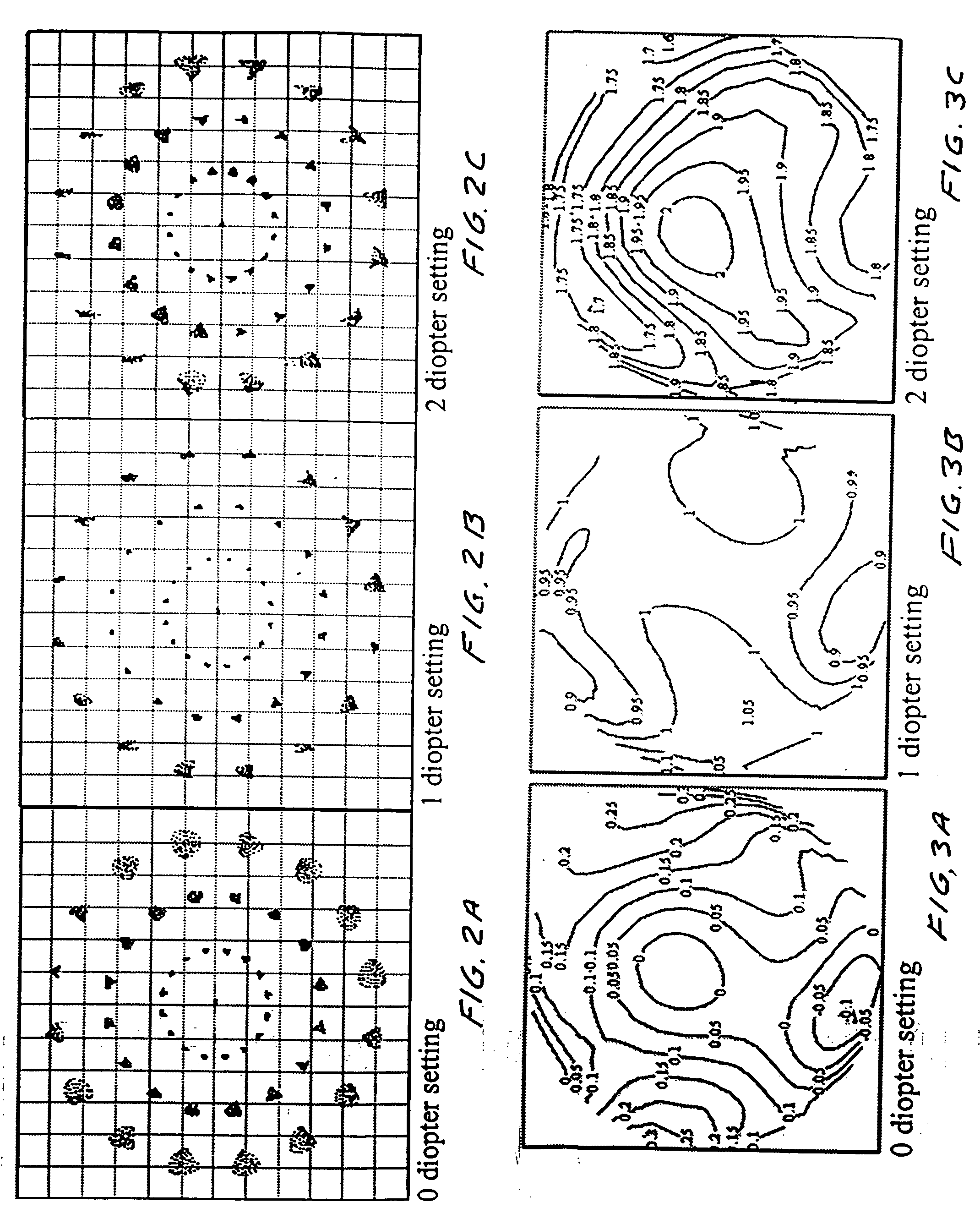Adjustable focus eyeglasses
a technology of eyeglasses and focus lenses, applied in the direction of spectacles/goggles, instruments, spectacles/goggles, etc., can solve the problems of poor design optical performance, high assumption accuracy, and significantly inferior equations described by alvarez
- Summary
- Abstract
- Description
- Claims
- Application Information
AI Technical Summary
Benefits of technology
Problems solved by technology
Method used
Image
Examples
Embodiment Construction
Theory
[0045] In preferred embodiments of the present invention a mechanism is provided to adjust the position of one of the two lens elements (in each of the two lens units) relative to the other lens element in a direction generally perpendicular to a viewing direction. In a preferred set of embodiments the relative motion is linear in a single direction and in another set of embodiments the relative motion is pivotable about a pivot location outside the lenses. Examples of this relative motion are shown in FIG. 1A (vertical motion), FIG. 1B (horizontal motion) and FIG. 1C (pivotal motion). The first lens element has a specially designed thickness profile defining a first thickness profile and the second lens element has a thickness profile defining a second thickness. The thickness profiles are designed such that small adjustments of the relative positions of the two lenses in directions perpendicular or approximately perpendicular to a viewing direction results in changes in the...
PUM
 Login to View More
Login to View More Abstract
Description
Claims
Application Information
 Login to View More
Login to View More - R&D Engineer
- R&D Manager
- IP Professional
- Industry Leading Data Capabilities
- Powerful AI technology
- Patent DNA Extraction
Browse by: Latest US Patents, China's latest patents, Technical Efficacy Thesaurus, Application Domain, Technology Topic, Popular Technical Reports.
© 2024 PatSnap. All rights reserved.Legal|Privacy policy|Modern Slavery Act Transparency Statement|Sitemap|About US| Contact US: help@patsnap.com










